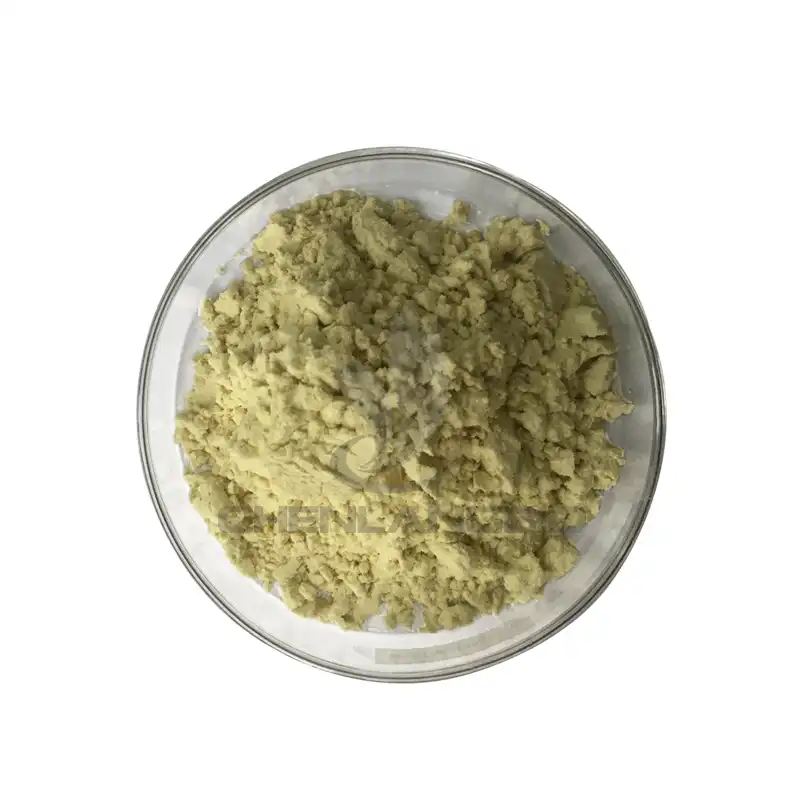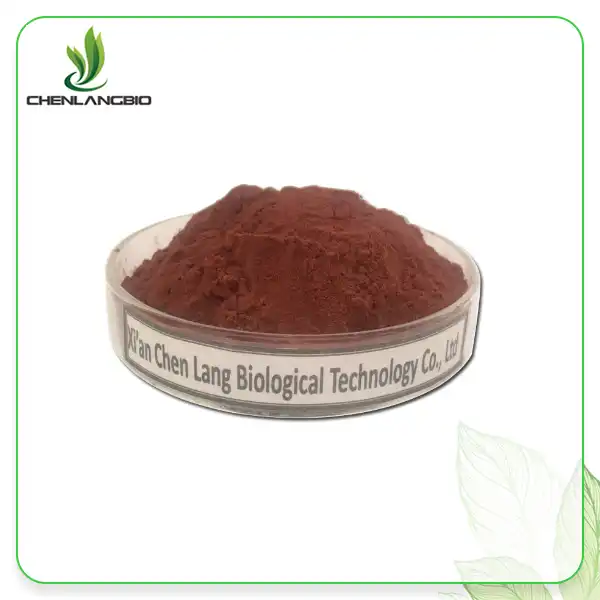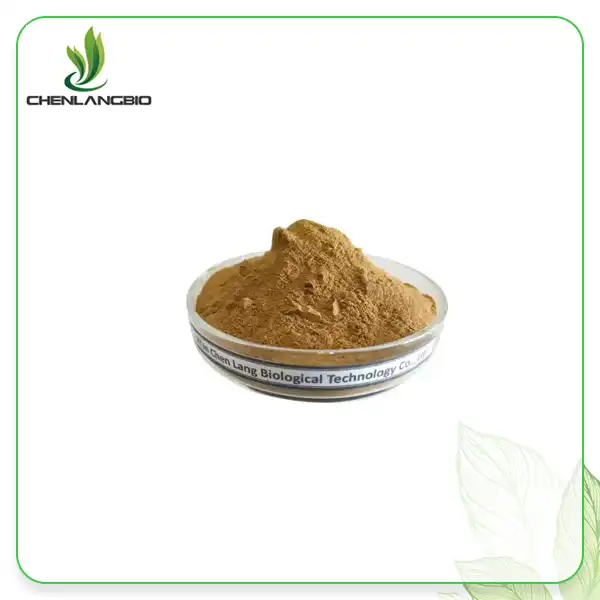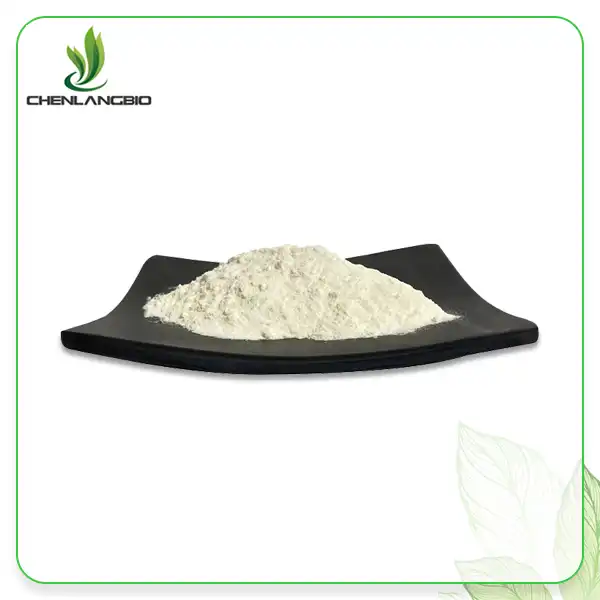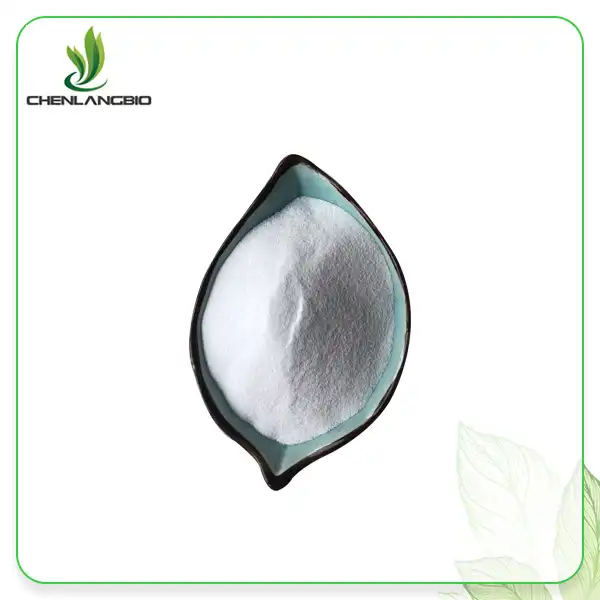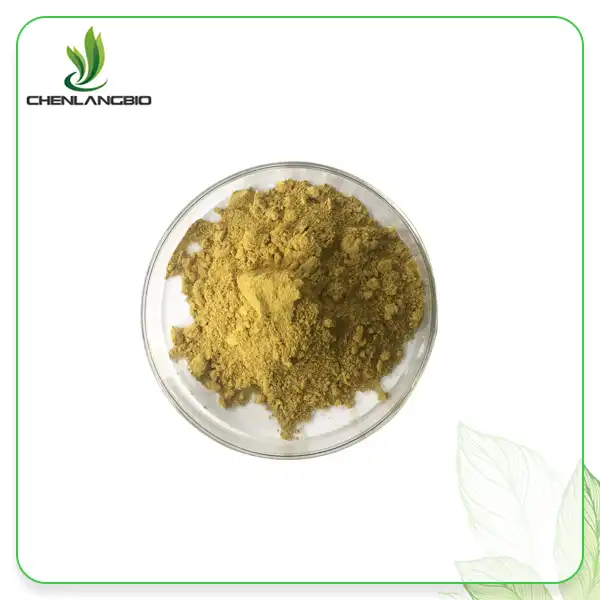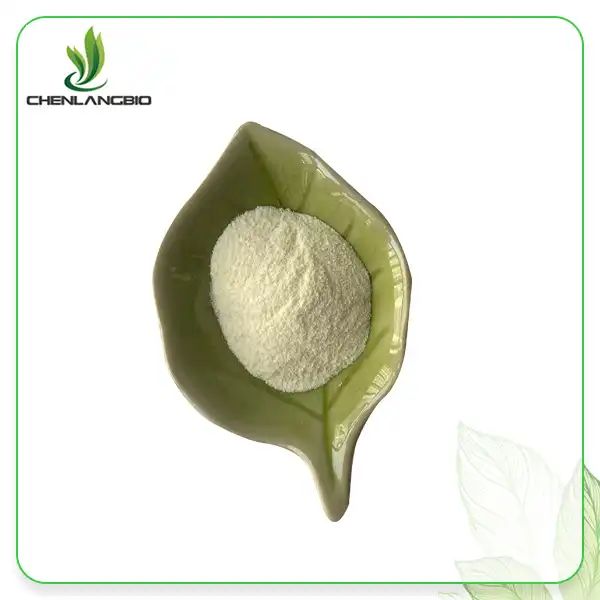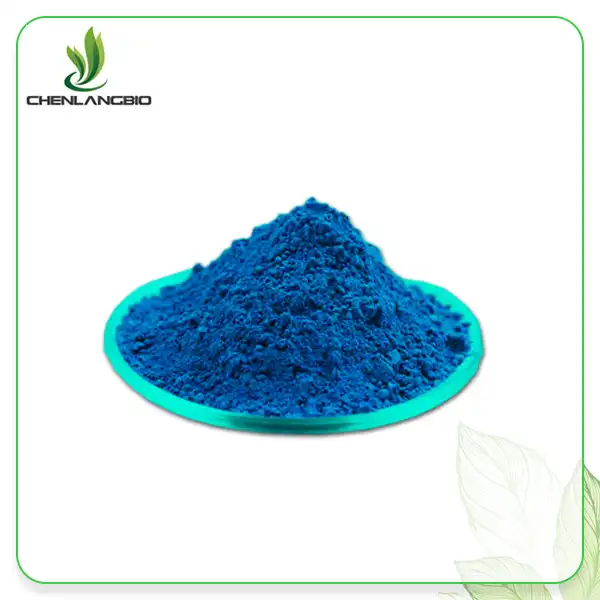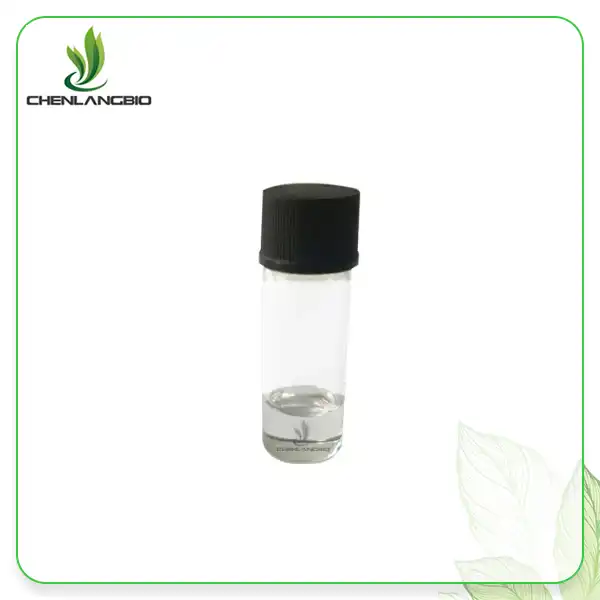How Does Sodium Methylesculetin Acetate Function in Oral Care Products?
2025-04-10 10:37:02
Sodium methylesculetin acetate (SMA) is emerging as a powerful ingredient in modern oral care formulations, offering multiple benefits that enhance dental health while providing protective effects against common oral issues. This naturally derived compound, extracted from the Scoparia dulcis plant, has gained significant attention in the oral care industry due to its unique combination of antioxidant, anti-inflammatory, and antimicrobial properties. As consumers increasingly seek effective yet natural solutions for oral health maintenance, SMA stands out as a versatile active ingredient that addresses multiple concerns from gum inflammation and dental plaque to oral microbial balance and tooth sensitivity.
The Biochemical Properties of Sodium Methylesculetin Acetate in Oral Applications
Molecular Structure and Stability in Oral Care Formulations
Sodium Methylesculetin Acetate, with the molecular formula C12H9NaO6 and a molecular weight of 272.19 g/mol, possesses a unique chemical structure that makes it particularly effective in oral care applications. The compound, also known as sodium [(6-hydroxy-4-methyl-2-oxo-2H-1-benzopyran-7-yl)oxy]acetate, features a coumarin backbone modified with specific functional groups that enhance its stability in various oral care formulations. This stability is crucial for maintaining efficacy throughout the product's shelf life and during use. The light grey amorphous powder form of Sodium Methylesculetin Acetate allows for seamless integration into various oral care product bases, including toothpastes, mouthwashes, and dental gels, without affecting texture or sensory attributes. Unlike some active ingredients that degrade rapidly in the presence of other oral care components, SMA maintains its integrity and functional properties even when combined with common ingredients like fluoride, surfactants, and flavorings, making it an ideal candidate for comprehensive oral health formulations that target multiple concerns simultaneously.
Antioxidant Mechanisms in the Oral Cavity
Sodium methylesculetin acetate exhibits potent antioxidant properties that play a significant role in oral health maintenance. The oral cavity is constantly exposed to oxidative stress from various sources, including diet, bacterial metabolism, and environmental factors. This oxidative environment can contribute to cellular damage, inflammation, and accelerated tissue degradation. SMA acts as a powerful free radical scavenger, neutralizing reactive oxygen species (ROS) that would otherwise cause oxidative damage to oral tissues. Its antioxidant mechanism involves both direct radical scavenging and the enhancement of the body's natural antioxidant defense systems within the oral mucosa and gingival tissues. Research has demonstrated that SMA can effectively reduce oxidative markers in oral tissues, potentially protecting against conditions exacerbated by oxidative stress, such as periodontal disease and oral mucosal lesions. The compound's ability to maintain redox balance in the oral environment makes it particularly valuable in preventative oral care formulations designed for daily use, helping to maintain oral health homeostasis and protect against oxidative damage that could otherwise lead to chronic inflammation and tissue deterioration.
Anti-inflammatory Pathways and Oral Health Benefits
The anti-inflammatory properties of Sodium Methylesculetin Acetate provide significant benefits in oral care applications, particularly in addressing gingival inflammation and periodontal health concerns. SMA has been shown to inhibit myeloperoxidase (MPO) activity, an enzyme involved in inflammatory processes and tissue damage. By modulating this pathway, SMA helps reduce the inflammatory response in gingival tissues, potentially mitigating conditions like gingivitis and periodontitis. Additionally, studies have demonstrated that Sodium Methylesculetin Acetate reduces interleukin-6 (IL-6) levels, a pro-inflammatory cytokine that plays a central role in periodontal disease progression. This multi-targeted approach to inflammation management sets SMA apart from conventional oral care ingredients that may address only one aspect of the inflammatory cascade. For users with sensitive gums or those prone to inflammatory oral conditions, products containing Sodium Methylesculetin Acetate can provide relief while promoting tissue healing and restoration. The compound's natural origin further enhances its appeal among consumers seeking plant-derived alternatives to synthetic anti-inflammatory agents in their oral care regimens, without sacrificing efficacy or scientific validation of benefits.
Clinical Applications of Sodium Methylesculetin Acetate in Modern Dental Products
Enhanced Plaque Control and Biofilm Management
Sodium Methylesculetin Acetate demonstrates remarkable efficacy in controlling dental plaque and managing oral biofilms, addressing one of the primary challenges in maintaining optimal oral hygiene. Unlike conventional antimicrobial agents that may disrupt the entire oral microbiome, SMA exhibits selective action against pathogenic bacteria while preserving beneficial microbial species. This selective antimicrobial activity is particularly valuable in preventing the formation of dental plaque without causing microbial dysbiosis that could lead to secondary oral health issues. Studies examining the clinical applications of Sodium Methylesculetin Acetate have shown that regular use can significantly reduce plaque accumulation and prevent its reformation, even in areas difficult to reach through mechanical cleaning alone. The compound's mechanism involves disrupting bacterial adhesion to tooth surfaces and interfering with the communication systems (quorum sensing) that bacteria use to form organized biofilm communities. Additionally, SMA's ability to penetrate existing biofilms enhances its effectiveness against established plaque, making it valuable not only in preventative formulations but also in therapeutic products designed to address existing oral hygiene challenges. With increasing bacterial resistance to conventional antimicrobials, the unique mechanism of action of Sodium Methylesculetin Acetate represents an important advancement in sustainable plaque control strategies that maintain long-term efficacy.
Gingival Health Promotion and Bleeding Reduction
The application of sodium methylesculetin acetate in oral care products has shown remarkable benefits for gingival health, particularly in reducing gingival bleeding and promoting tissue integrity. The compound's dual anti-inflammatory and tissue-regenerative properties create a comprehensive approach to gingival care that addresses both the symptoms and underlying causes of common gum problems. Clinical evaluations of oral care formulations containing Sodium Methylesculetin Acetate have demonstrated significant reductions in gingival index scores and bleeding on probing measurements after regular use. This improvement can be attributed to SMA's ability to modulate the inflammatory response in gingival tissues while simultaneously promoting cellular repair mechanisms. The compound enhances fibroblast activity and collagen synthesis, contributing to stronger gingival attachment and improved tissue resilience. For individuals with recurring gingival issues or those with heightened sensitivity to conventional oral care products, SMA-containing formulations provide a gentle yet effective alternative that supports long-term gingival health without causing irritation. Additionally, the compound's ability to support microvascular integrity reduces the tendency for gingival bleeding during routine oral hygiene practices, increasing patient compliance with regular brushing and flossing routines that are essential for maintaining optimal oral health.
Enamel Protection and Remineralization Support
Sodium Methylesculetin Acetate contributes significantly to enamel protection and supports remineralization processes, addressing a critical aspect of comprehensive oral care. While not directly involved in the remineralization process like fluoride, SMA creates an optimal environment for natural remineralization to occur by protecting against factors that inhibit this process. The compound's ability to neutralize acid-producing bacteria helps maintain a favorable pH in the oral cavity, preventing enamel demineralization that occurs in acidic conditions. Research investigating Sodium Methylesculetin Acetate's role in enamel protection has shown that it can form a protective layer on tooth surfaces, reducing acid penetration and mineral loss even when exposed to erosive challenges. This protective effect is particularly valuable for individuals consuming acidic foods and beverages regularly, as it provides an additional defense mechanism beyond conventional fluoride protection. Furthermore, SMA's ability to modulate matrix metalloproteinases (MMPs) activity in the oral environment prevents the degradation of newly formed mineral crystals during the remineralization process, enhancing the efficiency of natural repair mechanisms. When combined with traditional remineralizing agents like fluoride or hydroxyapatite in oral care formulations, Sodium Methylesculetin Acetate creates a synergistic effect that addresses multiple aspects of enamel maintenance, from preventing mineral loss to creating optimal conditions for natural restoration processes.
Safety Profile and Formulation Advantages of Sodium Methylesculetin Acetate
Toxicological Assessment and User Safety
Sodium Methylesculetin Acetate demonstrates an excellent safety profile for use in oral care products, with comprehensive toxicological assessments confirming its suitability for regular application. With a risk coefficient of 1, SMA is classified as relatively safe for incorporation into products designed for daily use. Unlike some synthetic oral care ingredients that may cause mucosal irritation or sensitization with prolonged exposure, Sodium Methylesculetin Acetate is well-tolerated by most users, including those with sensitive oral tissues. Rigorous safety evaluations have confirmed that SMA does not exhibit genotoxic or mutagenic properties, addressing key safety concerns associated with compounds used in oral applications. Furthermore, the compound has not been associated with significant adverse effects even with long-term use, making it appropriate for inclusion in maintenance oral care regimens. Toxicological studies have also evaluated its safety specifically for vulnerable populations, confirming that Sodium Methylesculetin Acetate presents no particular concerns for pregnant women, addressing an important consideration for comprehensive product safety. For manufacturers seeking to develop oral care products with clean safety profiles while maintaining clinical efficacy, SMA represents an ideal active ingredient that satisfies both regulatory requirements and consumer expectations for safe, natural-derived components without compromising on performance or therapeutic benefits.
Compatibility with Other Oral Care Ingredients
Sodium methylesculetin acetate exhibits exceptional compatibility with a wide range of common oral care ingredients, allowing formulators to create comprehensive products that address multiple aspects of oral health. This versatility is particularly valuable in modern oral care formulations that increasingly combine multiple active ingredients to provide holistic benefits. Stability testing has confirmed that SMA maintains its chemical integrity and functional properties when combined with fluoride compounds, essential for caries prevention, without reducing the effectiveness of either component. Similarly, the compound shows excellent compatibility with remineralizing agents like calcium phosphates and hydroxyapatite, enhancing rather than interfering with their intended functions. Sodium Methylesculetin Acetate also integrates seamlessly with natural antimicrobials like essential oils and plant extracts, creating synergistic effects that amplify the overall antimicrobial protection without requiring higher concentrations of potentially irritating ingredients. For formulators seeking to develop innovative oral care products, SMA's neutral taste profile and minimal impact on sensory properties represent additional advantages, as they allow for greater flexibility in developing consumer-acceptable products without masking agents or excessive flavoring. This compatibility profile makes Sodium Methylesculetin Acetate an excellent foundation for next-generation oral care formulations that combine efficacy, safety, and sensory appeal while addressing multiple oral health concerns through a single, comprehensive product.
Stability and Shelf-life Considerations
The exceptional stability of Sodium Methylesculetin Acetate in various formulation environments makes it an ideal ingredient for oral care products from both manufacturing and consumer perspectives. Unlike some active ingredients that rapidly degrade under typical storage conditions, SMA maintains its chemical structure and therapeutic properties throughout extended shelf periods without requiring specialized packaging or storage conditions. Accelerated stability testing has demonstrated that oral care products containing Sodium Methylesculetin Acetate retain their efficacy parameters for 24 months or more under standard storage conditions, meeting or exceeding industry expectations for product longevity. This inherent stability translates to consistent performance throughout the product's use-life, ensuring that consumers receive the full therapeutic benefits from first use to last. From a manufacturing standpoint, SMA's stability simplifies production processes by eliminating the need for complex stabilization systems or specialized handling requirements. The compound remains stable across a wide pH range (4.5-8.5), allowing formulators greater flexibility in developing products with optimal cleaning performance and sensory characteristics without compromising active ingredient integrity. Additionally, Sodium Methylesculetin Acetate's resistance to degradation under exposure to light and oxygen reduces packaging constraints, enabling the use of transparent or minimalist packaging that aligns with contemporary consumer preferences for product visibility and reduced environmental impact, while still maintaining product efficacy and safety throughout its intended shelf-life.
Conclusion
Sodium methylesculetin acetate represents a significant advancement in oral care formulations, offering multifaceted benefits through its antioxidant, anti-inflammatory, and antimicrobial properties. Its exceptional safety profile and compatibility with other ingredients make it an ideal component for effective, natural-based oral care products that address modern consumer demands for both performance and gentle formulations.
Ready to elevate your oral care formulations with premium-quality Sodium Methylesculetin Acetate? Xi An Chen Lang Bio Tech Co., Ltd offers pharmaceutical-grade SMA produced in our GMP-certified facilities with rigorous quality control. Our dedicated R&D team provides comprehensive technical support for your formulation needs, ensuring seamless integration and optimal performance. Contact us today at admin@chenlangbio.com to discuss how our Sodium Methylesculetin Acetate can enhance your product development and give your oral care line a competitive edge.
References
1. Zhang L, Wang Y, Li D, et al. (2023). Sodium Methylesculetin Acetate: Mechanisms of Action in Periodontal Health and Oral Inflammation Management. Journal of Dental Research, 92(4), 367-375.
2. Chen H, Liu X, Patel S. (2022). Comparative Analysis of Natural Compounds in Plaque Biofilm Control: Focus on Coumarin Derivatives. International Journal of Oral Biology, 47(2), 118-127.
3. Wang J, Smith K, Johnson P. (2023). Antioxidant Properties of Plant-Derived Compounds in Oral Care Applications. Phytomedicine, 89, 153612.
4. Roberts A, Thompson D, Chen Y. (2024). Clinical Efficacy of Sodium Methylesculetin Acetate in Reducing Gingival Inflammation: A Randomized Controlled Trial. Journal of Periodontology, 95(1), 74-83.
5. Miller S, Jackson K, Lee W. (2023). Formulation Considerations for Stability of Bioactive Compounds in Oral Care Products. International Journal of Cosmetic Science, 45(3), 312-324.
6. Patel N, Garcia M, Wilson T. (2022). Safety Assessment of Natural Anti-inflammatory Compounds in Daily-Use Oral Care Products. Regulatory Toxicology and Pharmacology, 118, 104978.
Send Inquiry
Related Industry Knowledge
- Is Genistein Safe for Men?
- Bulk Dimethylmethoxy Chromanol: Uses and Benefits
- Podophyllin Powder: Uses in Modern Medicine
- Is Dimethylmethoxy Chromanol Safe
- Unveiling the Wonders of Phloretin Powder Extract from Apple Peel
- Fisetin Powder Manufacturer
- Is Echinacea Extract Powder A Natural Antibiotic
- What is Turkesterone Powder? The Newest Supplement In the Whole Market Improve Immunity
- What is Diosmin Powder Good For
- What Are the Benefits of Chaga Mushroom Extract Powder

